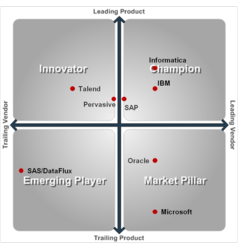
Los Angeles, CA (PRWEB) June 22, 2012
The global market for engineering services consists of the work performed by consultant engineering firms along with the in-house services undertaken by construction contractors, manufacturers, government agencies and utility owners. According to IBISWorld industry analyst Anthony Kelly, the industry’s performance is principally driven by the trends into construction, manufacturing and mining developments (particularly in the large industrial economies) and increasingly from work in the fields of technological development and the sustainable environment. Over the past decade the industry has expanded its operations by broadening across a wider range of multidisciplinary services, by the trend towards globalization and through the outsourcing of services by public authorities and major corporations.
The Global Engineering Services industry is one of the largest professional service industries, generating revenue of about $ 530 billion in 2012 (up 3.0% on the previous year), and employing 2.9 million people. Industry value added currently totals $ 318 billion, or 0.6% of the world’s GDP, two-thirds of which represents payments to employees and the balance the industry’s operating profit. The industry’s performance deteriorated during the late 2000s with the onset of recession in several of the largest developed economies and the subsequent decline in construction and industrial production. Despite the current improvement, industry revenue is estimated to average subdued growth by 0.5% per annum over the five years through 2012.
International trade represents a significant share of industry activity (10.6% of revenue in 2012) and is mainly confined to relatively few large-scale consulting engineering firms that are capable of operating outside national boundaries, said Kelly. A feature of the industry that has accompanied globalization has been the amalgamation of the larger players to achieve scale economies, broaden the market and strengthen the human and financial resources (consistent with the trend evident in other knowledge-based industries such as accounting, law, advertising and architecture).
The Global Engineering Services industry has a low concentration of ownership, with the four largest companies accounting for about 6.0% of annual industry revenue. The largest players in the global market for engineering services include URS Corporation, SNC-Lavalin Group, Bechtel Group, Jacobs Engineering Group, Fluor Corporation, AECOM Technology Corporation, CH2M HILL Companies, WS Atkins plc, and Altran Technologies. Despite this low concentration, there has been a trend over the past decade for the consolidation of the operations of many of the world’s leading consulting engineering firms, through mergers or strategic alliances. These large-scale, multidisciplined, multinational companies are well placed to win contracts in most markets. For more information, visit IBISWorlds Global Engineering Services in the US industry report page.
Follow IBISWorld on Twitter: https://twitter.com/#!/IBISWorld
Friend IBISWorld on Facebook: http://www.facebook.com/pages/IBISWorld/121347533189
IBISWorld industry Report Key Topics
The industry comprises establishments engaged in applying physical laws and principles of engineering in the design, development and use of machines, materials, instruments, structures, processes and systems. The assignments may involve the provision of advice, preparation of feasibility studies, preparation of preliminary and final plans and designs, the provision of technical services on construction and project evaluation.
Industry Performance
Executive Summary
Key External Drivers
Current Performance
Industry Outlook
Industry Life Cycle
Products & Markets
Supply Chain
Products & Services
Major Markets
Globalization & Trade
Business Locations
Competitive Landscape
Market Share Concentration
Key Success Factors
Cost Structure Benchmarks
Barriers to Entry
Major Companies
Operating Conditions
Capital Intensity
Key Statistics
Industry Data
Annual Change
Key Ratios
About IBISWorld Inc.
Recognized as the nations most trusted independent source of industry and market research, IBISWorld offers a comprehensive database of unique information and analysis on every US industry. With an extensive online portfolio, valued for its depth and scope, the company equips clients with the insight necessary to make better business decisions. Headquartered in Los Angeles, IBISWorld serves a range of business, professional service and government organizations through more than 10 locations worldwide. For more information, visit http://www.ibisworld.com or call 1-800-330-3772.




